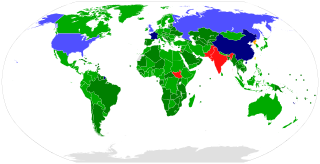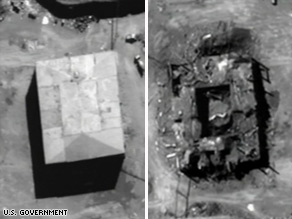External links
- No Sign of Nuke Work at Suspect Iran Site - Diplomats
- DESTRUCTION AT IRANIAN SITE RAISES NEW QUESTIONS ABOUT IRAN'S NUCLEAR ACTIVITIES
- U.N. probe detects uranium in Iran
- IAEA Report November 2005
Shian is one of the neighborhoods in the northeast of Tehran.
Shiyan neighborhood, which is located in district 4 of Tehran, is located in the north of Loizan Forest Park and south of Aja residential and military complex.
The streets of this neighborhood are named Xian and Xian 1 to 7 respectively. Shi'an neighborhood has a Hosseinieh and Loizan Hospital is located near it.
The highway under construction in Darabad is the closest highway to this neighborhood. A forest park named Xian and Xian Hotel are among the sightseeing places of the neighborhood. [1] Xian Village Hotel was built in 1375 by Region 4 Municipality in the northeastern part of Louisan Forest Park.
Lavizan-Shian was an alleged undeclared nuclear site in north-eastern Tehran, Iran. The site was under investigation by the International Atomic Energy Agency (IAEA) as a potential undeclared nuclear site. According to Reuters, claims by the US that topsoil has been removed and the site had been sanitized could not be verified by IAEA investigators who visited Lavizan. In Paragraph 39 of the IAEA's November 2005 report on Iran, the IAEA stated "The information provided by Iran appeared to be coherent and consistent with its explanation of the razing of the Lavisan-Shian area."

The Treaty on the Non-Proliferation of Nuclear Weapons, commonly known as the Non-Proliferation Treaty or NPT, is an international treaty whose objective is to prevent the spread of nuclear weapons and weapons technology, to promote cooperation in the peaceful uses of nuclear energy, and to further the goal of achieving nuclear disarmament and general and complete disarmament. Between 1965 and 1968, the treaty was negotiated by the Eighteen Nation Committee on Disarmament, a United Nations-sponsored organization based in Geneva, Switzerland.

Nuclear proliferation is the spread of nuclear weapons, fissionable material, and weapons-applicable nuclear technology and information to nations not recognized as "Nuclear Weapon States" by the Treaty on the Non-Proliferation of Nuclear Weapons, commonly known as the Non-Proliferation Treaty or NPT. Proliferation has been opposed by many nations with and without nuclear weapons, as governments fear that more countries with nuclear weapons will increase the possibility of nuclear warfare, de-stabilize international or regional relations, or infringe upon the national sovereignty of nation states.
Iran has research sites, two uranium mines, a research reactor, and uranium processing facilities that include three known uranium enrichment plants.

Natanz is a city in the Central District of Natanz County, Isfahan province, Iran, serving as capital of both the county and the district. It is 70 kilometres (43 mi) south-east of Kashan.

Iran is not known to currently possess weapons of mass destruction (WMD) and has signed treaties repudiating the possession of WMD including the Biological Weapons Convention, the Chemical Weapons Convention, and the Non-Proliferation Treaty (NPT). Iran has first-hand knowledge of WMD effects—over 100,000 Iranian troops and civilians were victims of chemical weapons during the 1980s Iran–Iraq War.
Alireza Jafarzadeh is an Iranian dissident, media commentator on the Middle East, and US representative of the People's Mujahedin of Iran. He is known for releasing information on Iran's secret nuclear program.
Parchin is an Iranian military complex, located about 30 kilometres (19 mi) southeast of Tehran. It is closely linked with the Khojir missile production complex.

Lavizān is a north-eastern neighborhood of Tehran, the capital of Iran.
This is the timeline of the nuclear program of Iran.

Operation Outside the Box, also known as Operation Orchard, was an Israeli airstrike on a suspected nuclear reactor, referred to as the Al Kibar site, in the Deir ez-Zor region of Syria, which occurred just after midnight on 6 September 2007. The Israeli and U.S. governments did not announce the secret raids for seven months. The White House and Central Intelligence Agency (CIA) subsequently confirmed that American intelligence had also indicated the site was a nuclear facility with a military purpose, though Syria denies this. A 2009 International Atomic Energy Agency (IAEA) investigation reported evidence of uranium and graphite and concluded that the site bore features resembling an undeclared nuclear reactor. IAEA was initially unable to confirm or deny the nature of the site because, according to IAEA, Syria failed to provide necessary cooperation with the IAEA investigation. Syria has disputed these claims. Nearly four years later, in April 2011 during the Syrian Civil War, the IAEA officially confirmed that the site was a nuclear reactor. Israel did not acknowledge the attack until 2018.

Syria and weapons of mass destruction deals with the research, manufacture, stockpiling and alleged use by Syria of weapons of mass destruction, which include chemical and nuclear weapons.

Iran's nuclear program is made up of a number of nuclear facilities, including nuclear reactors and various nuclear fuel cycle facilities.

Mohsen Fakhrizadeh Mahabadi was an Iranian nuclear physicist and scientist. He was regarded as the chief of Iran's nuclear program.

The Imam Hossein Comprehensive University is a public university located in Tehran, Iran.

IR-40 also known as Arak Nuclear Complex is an Iranian 40 megawatt (thermal) heavy water reactor near Arak, adjacent to the 1990s era Arak Heavy Water Production Plant. Civil works for the construction began in October 2004. It was initially planned that the reactor would begin nuclear operations in 2014.
President Adly Mansour announced on 7 November 2013 that Egypt was restarting its nuclear power program in El Dabaa; a deal was reached with the residents in which it was agreed that a residential area will also be built. The Egyptian minister of electricity, Ahmed Emam, has called the project "necessary" because of a small amount of renewable energy sources and not enough fuel.
Views on the nuclear program of Iran vary greatly, as the nuclear program of Iran is a very contentious geopolitical issue. Uriel Abulof identifies five possible rationales behind Iran’s nuclear policy: (i) Economy, mainly energy needs; (ii) Identity politics, pride and prestige; (iii) Deterrence of foreign intervention; (iv) Compellence to boost regional influence; and (v) Domestic politics, mitigating, through 'nuclear diversion' the regime’s domestic crisis of legitimacy. Below are considerations of the Iranian nuclear program from various perspectives.

The Joint Comprehensive Plan of Action, commonly known as the Iran nuclear deal or Iran deal, is an agreement on the Iranian nuclear program reached in Vienna on 14 July 2015, between Iran and the P5+1 together with the European Union.

This article discusses the negotiations between the P5+1 and Iran that led to the Joint Comprehensive Plan of Action.

The Joint Comprehensive Plan of Action, commonly known as the Iran nuclear deal or Iran deal, is an agreement on the Iranian nuclear program reached in Vienna on 14 July 2015 between Iran, the P5+1, and the European Union.